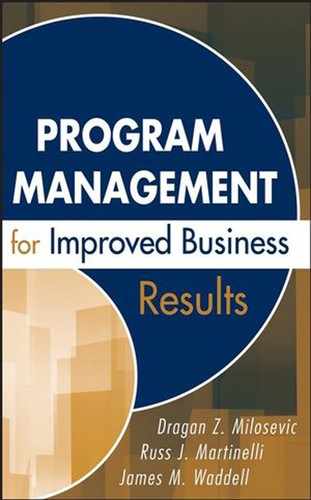To this point in the book we have explained how program management is an extension of business strategy; how a program is defined, planned, and executed; and what common processes, metrics, and tools are available for use by the program manager.
This part of the book focuses on the program manager. Specifically, the program manager's primary roles and responsibilities and the competencies that a program manager needs to effectively manage a program.
In Chapter 12, we begin by explaining that programs are the investment vehicles used to achieve ROI and other strategic objectives and why the business manager needs to delegate business responsibilities to a program manager for managing the ROI for a particular program. To achieve this responsibility, the program manager has two primary roles to fulfill: managing the business aspects of the program and leading the program team to success.
The first role, managing the business, begins with the focus on alignment of the program with business strategy and development of the program business case. Then, it continues with the management of program finances, resources, intellectual property, and business risks. The first role ends with monitoring the market and customers.
The second role of the program manager—leading the team—concentrates on establishing the program vision, empowering the PCT, and navigating change and risk through the collaborative work of the program team.
To successfully respond to these two roles, the program manager needs to be proficient in a broad set of competencies. In Chapter 13, we present the program management competency model. The model contains the necessary knowledge, skills, and organizational enablers to systematically support the recruiting, staffing, professional development, and career planning of the program manager. The competencies and enablers cover customer and market, business, leadership, and process and project management proficiencies.
Each company should adapt the mix of competency categories and tailor them according to its specific needs and business strategy. This may be needed if a company undertakes programs of diverse nature and complexity. Finally, we offer some advice on how the competency model can be of value in staffing program management positions.
An example from practice at the end of Part IV establishes two important points. First, the example shows how business strategy drives the mix of program manager competencies and how the competencies can be tailored to adapt to a company's strategy. Second, the example introduces a set of competencies needed for program managers faced with having to manage multiple programs concurrently.
